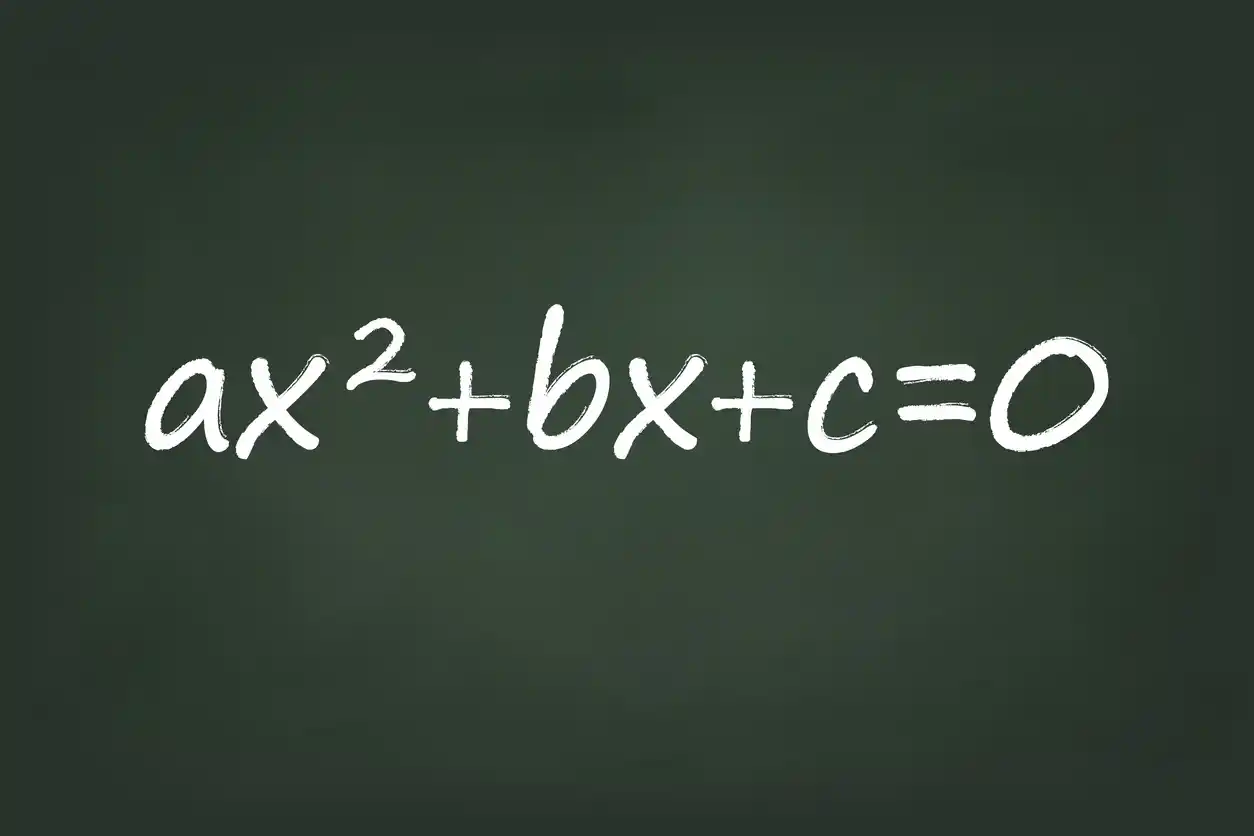What is the leading coefficient of a polynomial function? How is it connected to the degree? In this blog post I also go over how to find the constant, number of terms, and degree polynomial names (monomial, binomial, trinomial, etc.). I also discuss the definition of a polynomial function.
First Things First
If you’re a teacher reading this, did you grab my *FREE* Algebra 2 Pretest (10 pages) with answers yet? Click here.
If you’re a student, this topic is also one of my modules in my online course to get a solid foundation in any high school math subject, not just in Algebra FYI!
Check out my full lesson plan with worksheets, answer keys, and more here! A full introduction with multiplicity, end behavior, roots/zeros, graphing, etc..
You can watch my YouTube Video as I go over a degree four polynomial example on how to find the leading coefficient, degree, constant, number of terms, and classifying polynomials here.
Defining a Polynomial
A polynomial is basically an algebraic expression that contain variables multiplied by coefficients. It is super important to note that the exponents of all the variables can only be positive and integer (whole number) powers. (If it’s to a negative power, then it becomes a rational expression.)
Standard form of a polynomial function is, simply put, where the terms are arranged in a way that the exponents are written in descending order.
Example: $ 7x^6 – 8x^5 + 3x^4 – 2x^3 + x^2 + 2x – 1 $
What is a Term?
Simply put, a term is something that is glued together by multiplication. An example is $2x^2$ because the 2 and $x^2$ have an imaginary multiplication symbol between them.
If you’re asked how many terms does the polynomial function have, I like to tell people that you can just circle all of the addition and subtraction symbols, and that makes it easier to count it visually. Again, I go over this method in my short video here.
Can the constant (the lonely one without any variables attached to it) also be it’s own term? Yes! An example is $4x^4 – 7x^3 + 2$. The number “2” is the constant because it doesn’t have any x’s attached to it. In total there are 3 terms here. In a way, you can look at that constant term as $2x^0$ since $x^0$ = 1, and so that’s really saying $2 \times 1$ which is 2.
Defining the Leading Coefficient
Now that we’ve gone over what a term is, the leading coefficient of a polynomial function is the numerical coefficient of the term with the highest exponent. In other words, it is the number in front of the term with the highest exponent.
Be careful because a lot of teachers like to be sneaky and rearrange the terms around (it’s not in standard form). And so a lot of students make the mistake in that they just look at the first number they see. But you must first scan for the term that has the highest exponent, and then identify that number in front as the actual leading coefficient of the polynomial.
For example, in the polynomial $5x^2 + 6x – 3 – 2x^4 + 10x^3$, people might say that the leading coefficient is 5. Be careful, the highest exponent (called the degree) is 4 here, and so the leading coefficient is -2.
And by the way, there are 5 terms here, and the constant is -3 in this example. Additionally, if we were to rewrite this in standard form, it would be $-2x^4 + 10x^3 + 5x^2 + 6x – 3$.
What is the Degree of a Polynomial?
No, it has nothing to do with degrees like in geometry that have to do with angles.
As stated in the previous expression, the degree of a polynomial is just a fancy way of asking “what is the highest exponent”?
The Relationship Between the Leading Coefficient and Degree
The degree and leading coefficient go hand-in-hand. They go together like peanut butter and jelly.
The degree of a polynomial function, as stated earlier, is the highest exponent. The leading coefficient is directly related to the degree of the polynomial, since it is simply the number of front of that term. For example, in the polynomial function $-6x^5 + 2x^2 – 1$, the leading coefficient is -6, and the degree of the polynomial is 5.
End Behavior of a Polynomial Function
Again, I go over all of this in depth in my lesson plan here.
Even Degree: (2, 4, 6, …)
- A positive leading coefficient means that both arrows ultimately go up.
- A negative leading coefficient means that both arrows ultimately go down.
Odd Degree: (1, 3, 5, …)
- A positive leading coefficient means that, as we scan the graph going to the right, the arrow ultimately goes up.
- A negative leading coefficient means that, as we scan the graph going to the left, the arrow ultimately goes down.
Polynomial Degree Names
Polynomial functions can be classified into different types based on the number of terms they contain:
A monomial is a polynomial function with only one term, such as $3x^2$.
A binomial is a polynomial function with two terms, such as $3x^2-5x$`.
A trinomial is a polynomial function with three terms, such as $3x^2-5x+1$.
Practical Applications and Real-World Examples
Polynomial functions have a wide range of applications in various fields. Here are a few examples of how they are used in the real world:
1. Engineering and Physics
Polynomial functions are used to model the behavior of physical systems, such as the motion of objects under the influence of gravity or the stress-strain relationship in materials.
2. Economics and Finance
Polynomial functions can be used to model economic phenomena, such as supply and demand curves, production functions, and growth rates.
3. Biology and Medicine
Polynomial functions can be used to model biological processes, such as population growth, enzyme kinetics, and the spread of diseases.
4. Computer Science and Algorithms
Polynomial functions are used in the analysis of algorithms, where they help determine the time complexity and efficiency of computational processes.







